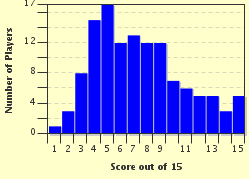Quiz Answer Key and Fun Facts
1. 'Spendin' cash, talkin' trash ... If it's square, we ain't there!'
Who are we?
2. Little Peggy March topped the charts with 'I Will Follow Him' in 1963. What distinction does she hold with this recording?
3. How old was Eric Burdon when he smoked his first cigarette in the Animals' 1966 hit 'When I was Young'?
4. The Beatles: They were feted and fanfared wherever they went - almost. From which Asian country were the 'Fab Four' summarily deported in 1966 for failing to turn up to a state reception in their honor?
5. The Rolling Stones: On their 1963 eponymous first album they covered a hard blues called 'I'm a King Bee'. Whose was the original?
6. No 60s pop quiz would be complete without the sophisticated, enduring compositions of Burt Bacharach and Hal David. Which of the following is NOT one of theirs?
7. Bob Dylan: At a 1966 Manchester concert, what did one heckler famously yell?
8. Girl groups: The darlings of 60s Motown, the Supremes, were Diana Ross, Mary Wilson and Florence Ballard. But in '67 Ballard was 'eased out' in acrimonious circumstances. Who was her replacement?
9. What was quintessential 60s British pop diva Dusty Springfield's breakthrough UK Singles Chart top ten hit, in early '64?
10. The lead singer of Sergio Mendes's Brasil 66, heard on bossanova crossover hits such as 'Mas Que Nada', was Lani Hall. Where was she from?
11. Years before the British 'guitar hero' and 'Clapton is God' phenomenon, a rather nerdy-looking, smart-suited, bespectacled chappie wielding a much-coveted red Fender Stratocaster was 'The Man' in Britain and Europe in the early 1960s. Who was he?
12. 'Power trio' Cream, established in '66, was rock's first recognized 'supergroup': Jack Bruce (bass, lead vocals) and Ginger Baker (drums) were from the Graham Bond Organisation. From which band did Eric Clapton join them?
13. After taking the London club scene by storm with impromptu jams that put every ranking axeman in the shade, Jimi Hendrix formed his own trio, the 'Experience'. Noel Redding played bass. Who was the drummer?
14. LA group The Doors hit the ground running with their monster '67 million-seller 'Light my Fire', putting 'psychedelic rock' firmly in the main stream. Charismatic and controversial frontman Jim Morrison provided vocals and lyrics. Who was their bassist?
15. What musical connection did multi-grammy-winning country singer-guitarist Glen Campbell share with blues-gospel singer/keyboardist and songwriter Leon Russell?
Source: Author
lifeliver
This quiz was reviewed by FunTrivia editor
agony before going online.
Any errors found in FunTrivia content are routinely corrected through our feedback system.

